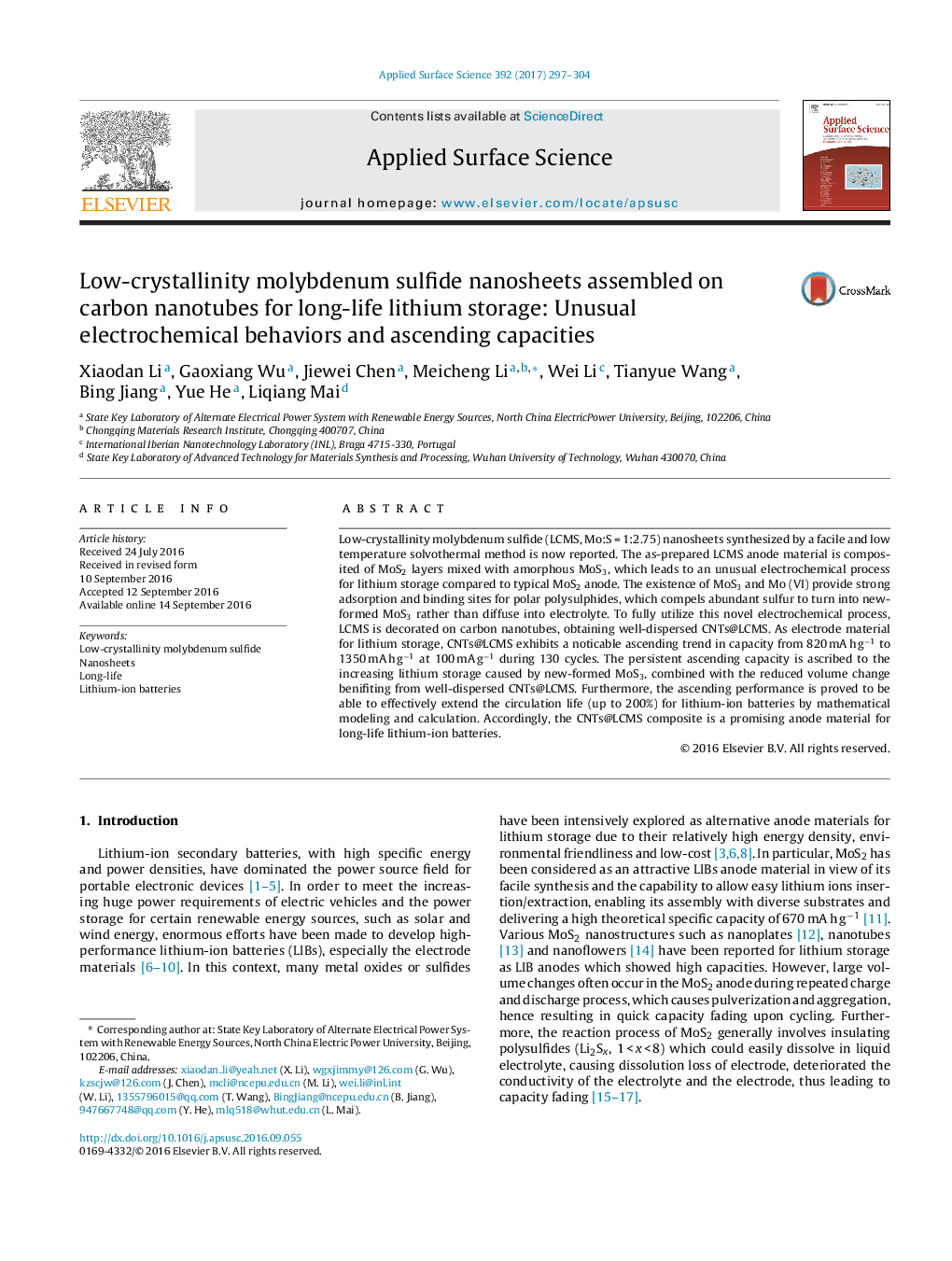| Article ID | Journal | Published Year | Pages | File Type |
|---|---|---|---|---|
| 5354642 | Applied Surface Science | 2017 | 8 Pages |
Abstract
Low-crystallinity molybdenum sulfide (LCMS, Mo:S = 1:2.75) nanosheets synthesized by a facile and low temperature solvothermal method is now reported. The as-prepared LCMS anode material is composited of MoS2 layers mixed with amorphous MoS3, which leads to an unusual electrochemical process for lithium storage compared to typical MoS2 anode. The existence of MoS3 and Mo (VI) provide strong adsorption and binding sites for polar polysulphides, which compels abundant sulfur to turn into new-formed MoS3 rather than diffuse into electrolyte. To fully utilize this novel electrochemical process, LCMS is decorated on carbon nanotubes, obtaining well-dispersed CNTs@LCMS. As electrode material for lithium storage, CNTs@LCMS exhibits a noticable ascending trend in capacity from 820 mA h gâ1 to 1350 mA h gâ1 at 100 mA gâ1 during 130 cycles. The persistent ascending capacity is ascribed to the increasing lithium storage caused by new-formed MoS3, combined with the reduced volume change benifiting from well-dispersed CNTs@LCMS. Furthermore, the ascending performance is proved to be able to effectively extend the circulation life (up to 200%) for lithium-ion batteries by mathematical modeling and calculation. Accordingly, the CNTs@LCMS composite is a promising anode material for long-life lithium-ion batteries.
Related Topics
Physical Sciences and Engineering
Chemistry
Physical and Theoretical Chemistry
Authors
Xiaodan Li, Gaoxiang Wu, Jiewei Chen, Meicheng Li, Wei Li, Tianyue Wang, Bing Jiang, Yue He, Liqiang Mai,
